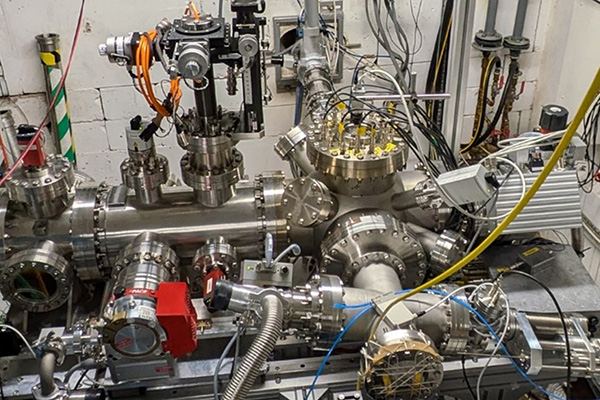Supersonic Gas Curtain for Real-Time Proton Beam Monitoring in Medical Treatments

The gas jet (front) coupled to the MC40 Cyclotron beam line at the University of Birmingham.
A team from the QUASAR Group has been developing a cutting-edge system to improve the safety and effectiveness of ion beam therapy used in cancer treatments. This system, funded by the Jet Dose and LhARA (ITRF) projects, uses a supersonic gas curtain to monitor the position and dose distribution of proton beams in real time.
Real-time monitoring allows doctors to control the beam more precisely during treatment, making cancer therapies safer and more reliable. The goal is to provide additional data to clinicians, ensuring that the correct dose is delivered with pinpoint accuracy. This also helps streamline the calibration process and reduces the time needed for each treatment session.
In August 2024, the team conducted experiments at the University of Birmingham’s MC40 Cyclotron facility, testing proton beams with energies ranging from 10 to 28 MeV. Over the past year, they upgraded their detection system, improving upon previous tests conducted at the Dalton Cumbria Facility in Whitehaven, UK. The data collected is now being analysed and will be published soon.
Looking ahead, the team is working on scaling these technologies for advanced therapies like FLASH, which has shown potential for greater effectiveness in targeting cancer cells while sparing healthy tissue. These innovations could transform the future of cancer treatment.